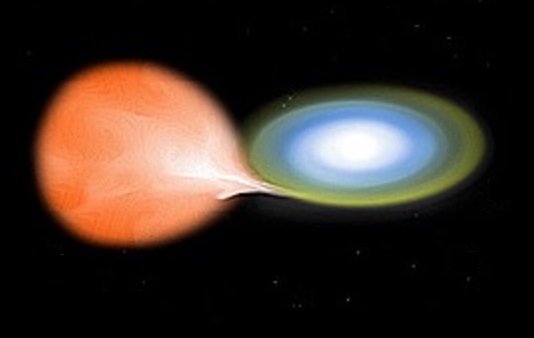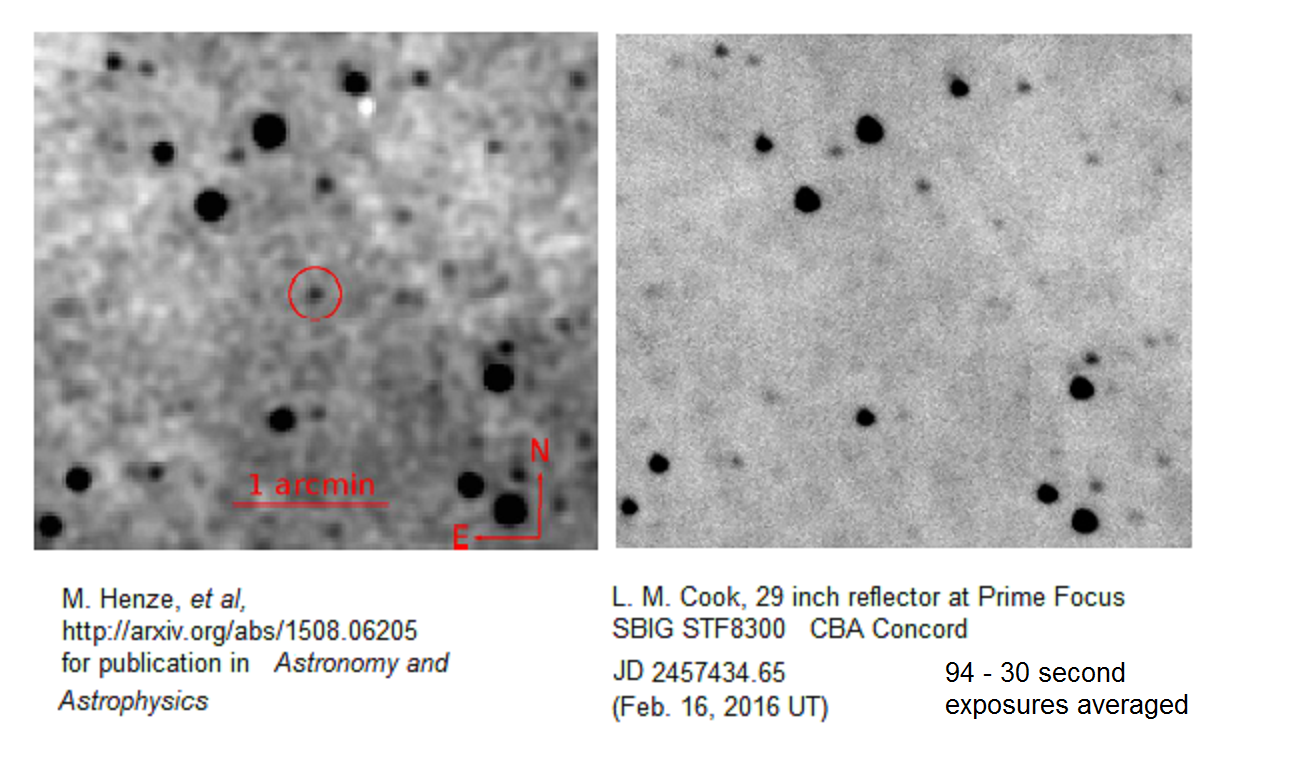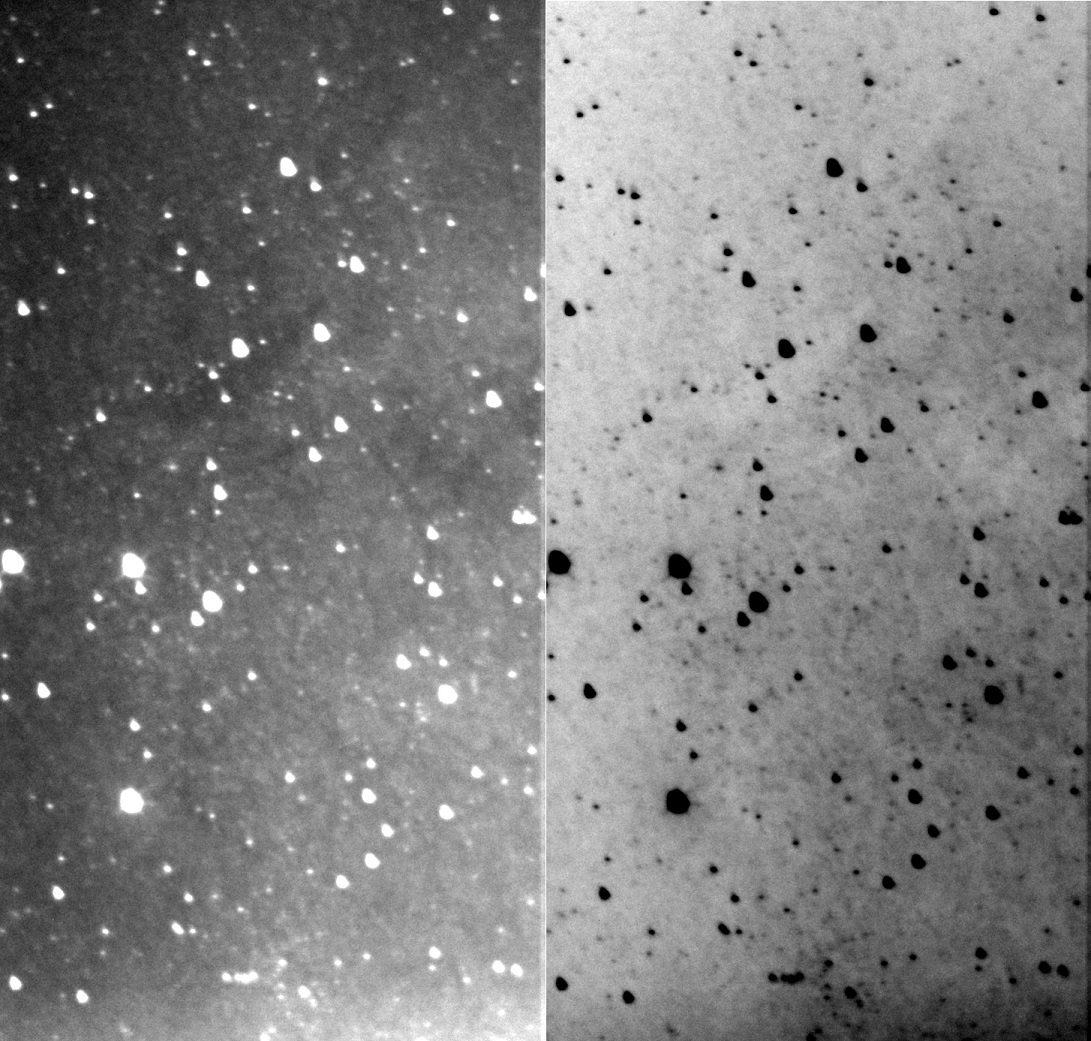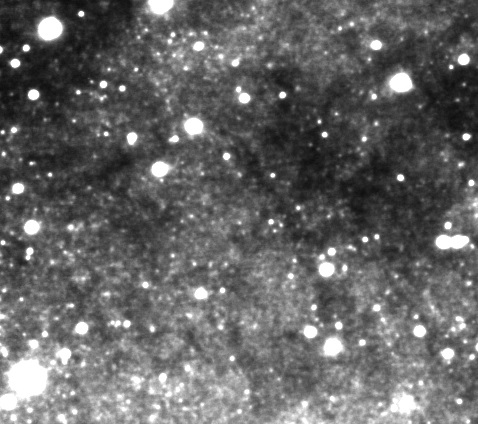The Search for M31N 2008-12a - A Recurrent Nova in the Andromeda Galaxy
Since January 22, 2016, I have been participating in a fascinating project: monitoring a recurrent nova in the Andromeda Galaxy. Recurrent novae are those whose outbursts have been observed more than once within a timeframe of a century. When not in outburst, like now, it is too faint to be been by my telescope at the present time - fainter than magnitude 22. When in outburst, it may get as bright as magnitude 18, which I can measure - when the conditions are good.I was asked by AAVSO Director Stella Kafka to participate in looking for this star because I routinely send AAVSO reports of observations fainter than magnitude 17. I am part of a world-wide team of observers in the Northern hemisphere of about 25 other observers watching for this star to erupt. We face many challenges besides the faintness of the star. Bright moonlight is one, city lights for me (on the Concord-Walnut Creek border), the twilight glow as the Andromeda galaxy is low in the west as it gets dark and finally dimming by absorption in our skies as it sinks lower and lower. I am using an infrared filter to dim the (blue) sky light as of February 21 and help peer through the murky atmosphere as it sinks lower and lower as the year progresses.
| A recurrent nova consists of a white dwarf star paired with a normal star, which is nearly always red, usually somewhat less than the sun's mass. White dwarfs are about the size of the earth but contain a mass on the same scale as the sun. What happens with a recurrent nova is the same process that happens with a regular nova: Matter streams from the normal-type star onto the surface of the white dwarf until the pressure and temperature reach a critical point. Then there is a runaway nuclear explosion on the SURFACE of the white dwarf star. The star increases many-fold in brightness and we see a "new" star in the sky. Because only a tiny fraction of the added white dwarf's mass is lost with each nova explosion, novas can repeat this process many times, with recurrence times from NEVER to 20 years. The star we are looking for is an exception: it has a recurrence time of ONE YEAR, and possibly six months. A diagram of a pre-eruption nova binary is shown below. A year or so after the eruption, it probably won't look much different, except for the REMNANTS. These appear as nebulosity like those of a planetary nebula. |
 Diagram of a Nova type star Credit: NASA, CXC, M.Weiss Fig. 1 These stars circle each other because they are gravitationally bound to each other. We have several recurrent novae in the Milky Way galaxy. They have periods of revolution ranging from a leisurely 519 days to 109 MINUTES. |

Fig. 2 The star we are watching for so far (May 20, 2016) was not seen this seasona although it may have "gone off" during the time that the Andromeda Galaxy was unobservable due to closeness to the sun, however that outburst may have been detectable by space craft operating in bands far outside the visible spectrum. We have probably eliminated that the recurrence time is on the order of half a year, although that is still possible.
This is a comparison of the same part of the sky as seen by professional observers during the outburst of 2012. My image (showing no nova outburst) is on the right.
Figure 3. A slightly cropped image here of the area and where the recurrent nova (M31N 2008-12a) is - almost one degree from the nucleus of the galaxy. Inset: (c) AAVSO. .jpg)

Figure 4. Two views of the study area. One, left, is a positive image and a negative image is shown on the right. This is a stack of images from 5 nights and shows stars down to about magnitude 21. The "teardrop" shape of the star images results from the mirror bending under its own weight as the altitude of the stars in this image is less than 36 degrees, and some of the images were shot as low as 30 degrees altitude. Often I can get down to magnitude 20 by stacking my images, and nearly always to 19. The date of the expected outburst of the nova is March 23 ... probably too late for me and most others looking for it, but look for it, we will. Why? Recurrent novae are also suspected Supernova IA progenitors (which are objects widely used in astrophysics). According to theoretical models, the nova outburst recurrence period is getting shorter as the white dwarfs of each system is approaching the necessary mass to explode as a supernova. At the worst possible time, this Recurrent Nova did erupt. What does 'the worst possible time' mean? 1. Full Moon
Even though it was clear in New Mexico, the design of the open tube structure of the largest (indeed ALL of the larger telescopes there) allows moonlight shining on parts of the telescope structure to be scattered as out-of-focus points of light (i.e. bright doughnuts) all over the image. These points did not move during the outburst, so the one measurement of brightness I got was of poor quality.. Just because something "looks cool" does not mean that it will work well.
The 2017 EruptionThis outburst happened at a very poor time for me. Full moon with cirrus clouds followed by thicker clouds a few days later. The 2018 OutburstWow! What an outburst! This one occurred during the dark of the moon at a time when N. California had clear skies for a long time (weeks) and I had access to a telescope with a very sensitive CMOS camera and the seeing was excellent! Furthermore, the 2018 outburst occurred
Here are images (200 x 30sec.) of the Recurrent Nova (a) at its brightest and (b) three days later
(b) Links |
